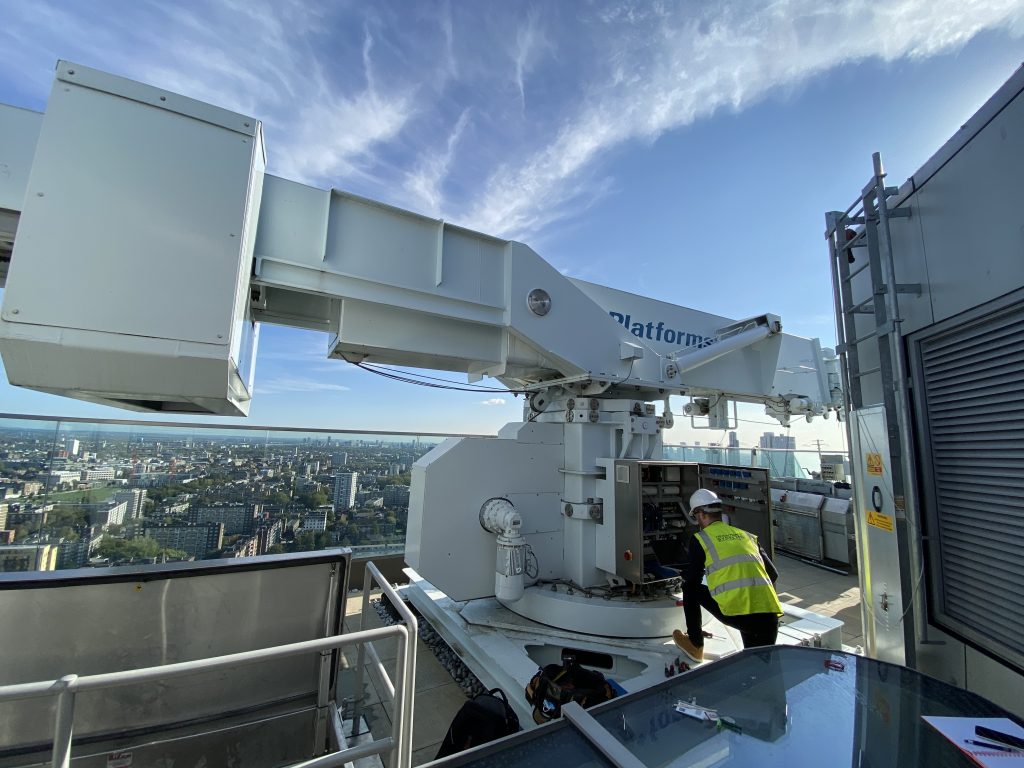The importance of BMU Maintenance
Building Maintenance Units (BMUs) are used for maintaining and cleaning the facades of a building. Whether it is a low to mid-rise building or a skyscraper, a BMU must provide 100% access to the facade while being 100% safe.
While a facade needs regular maintenance and cleaning, also remember that the equipment to reach these facades need some care. Keeping a BMU in good condition safeguards the maintenance workers using the equipment. Additionally regular maintenance limits downtime and helps keep repair costs under control.

Anatomy of a BMU
A BMU, such as a roof car, is installed permanently on a specific building or structure to provide workers with a safe way to access the facade. Generally the system can be found on top of a building where it is exposed to the elements.
The components of a BMU differ depending on the shape and size of the building and the wishes of the customer. But most BMUs consist of a roof car that positions a gondola or cradle in front of the facade.
The features of the roof car determine the range of the system. Meaning that a roof car needs to be customized to the building in order to reach all of the facades for cleaning, maintenance or repairs. There are several different types of roof cars, for example a knuckle jib roof car is used to maneuver a gondola around a corner of a building. A telescopic roof car on the other hand offers an adjustable reach and a traversing roof car can move along a rail track and thus reach more of the facade. Additionally both the knuckle jib and telescopic roof cars can be made into a traversing roof car offering even more range.
What all BMUs have in common, however, is that they are advanced pieces of machinery. And as with all machines BMUs need upkeep to ensure their longevity and safety.
Periodical maintenance
Periodical maintenance helps keep the BMU in optimal condition, automatically reducing delays in facade maintenance.
As BMU manufacturer we advise to have a BMU checked thoroughly at least once per year. This check has to be done by a well-trained service technician. He or she will check the entire machine for corrosion, distortions, damage or malfunctions.
Hoists, the bolts of the slewing rings, the protection of the hydraulic packs, limit switches, the brakes and the steel cables, everything is given special attention. Lubricants, such as oil, are replaced or filled. And any worn or damaged parts will be replaced to make sure the machines are safe for use and to minimize the chance of mechanical or electrical failure.
During the periodical maintenance the service technician will also perform several load tests to determine if the machine is still as strong as it was when it was installed and if it still complies with the (local) standards and safety regulations.
Remote maintenance
Even between periodical maintenance sessions BMUs can be monitored closely. The Programmable Logic Controller (PLC) in XSPlatforms BMUs allows for remote inspection and analysis of system faults. Meaning issues can often be resolved from our headquarters, by making changes to the software remotely.
Thanks to the PLC the BMU data can also be included in the Building Management System (BMS). From the BMS you can monitor and control all systems in a building, for example ventilation, fire alarms, elevators and lighting. With a BMU integration you can monitor the BMU while work is executed, simplifying facade maintenance.


